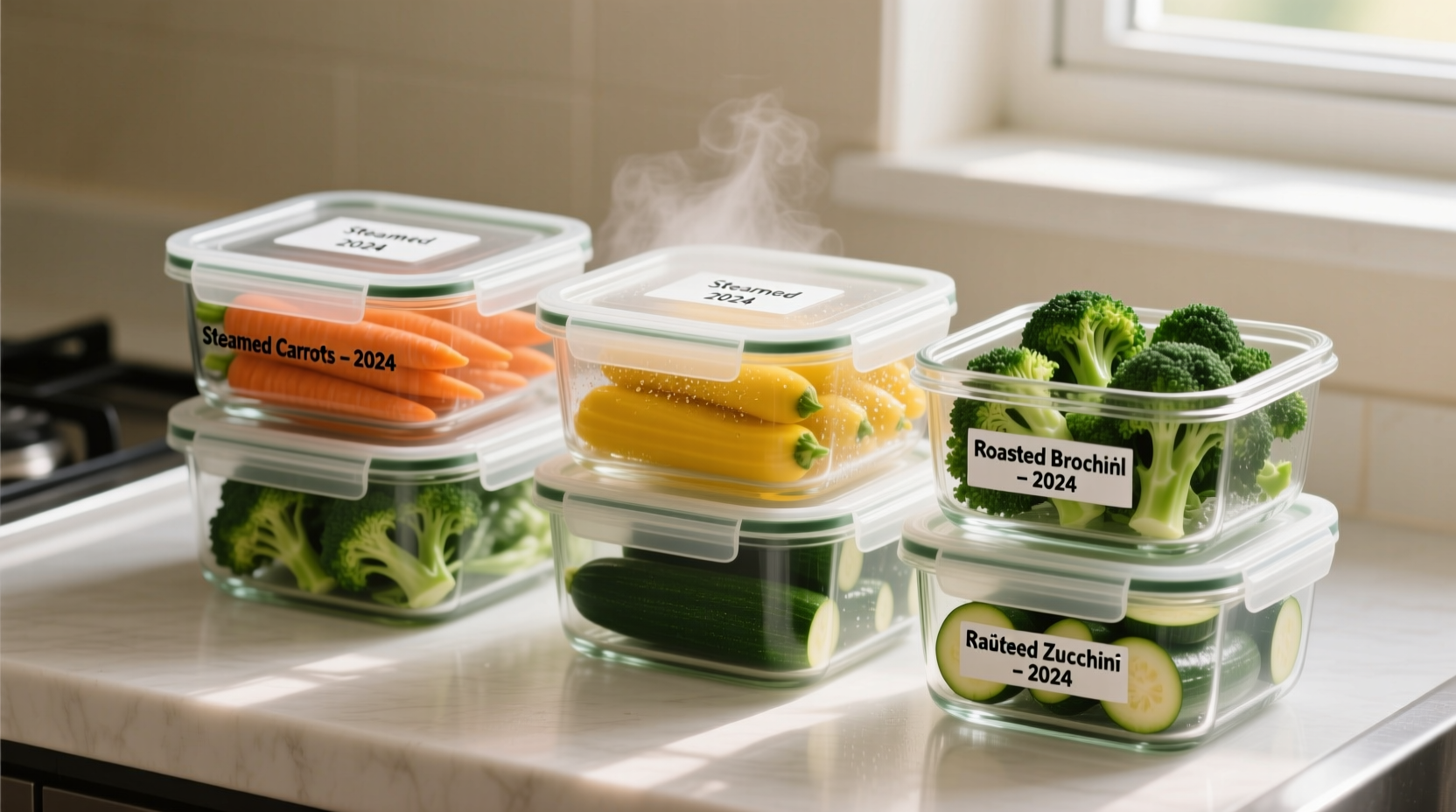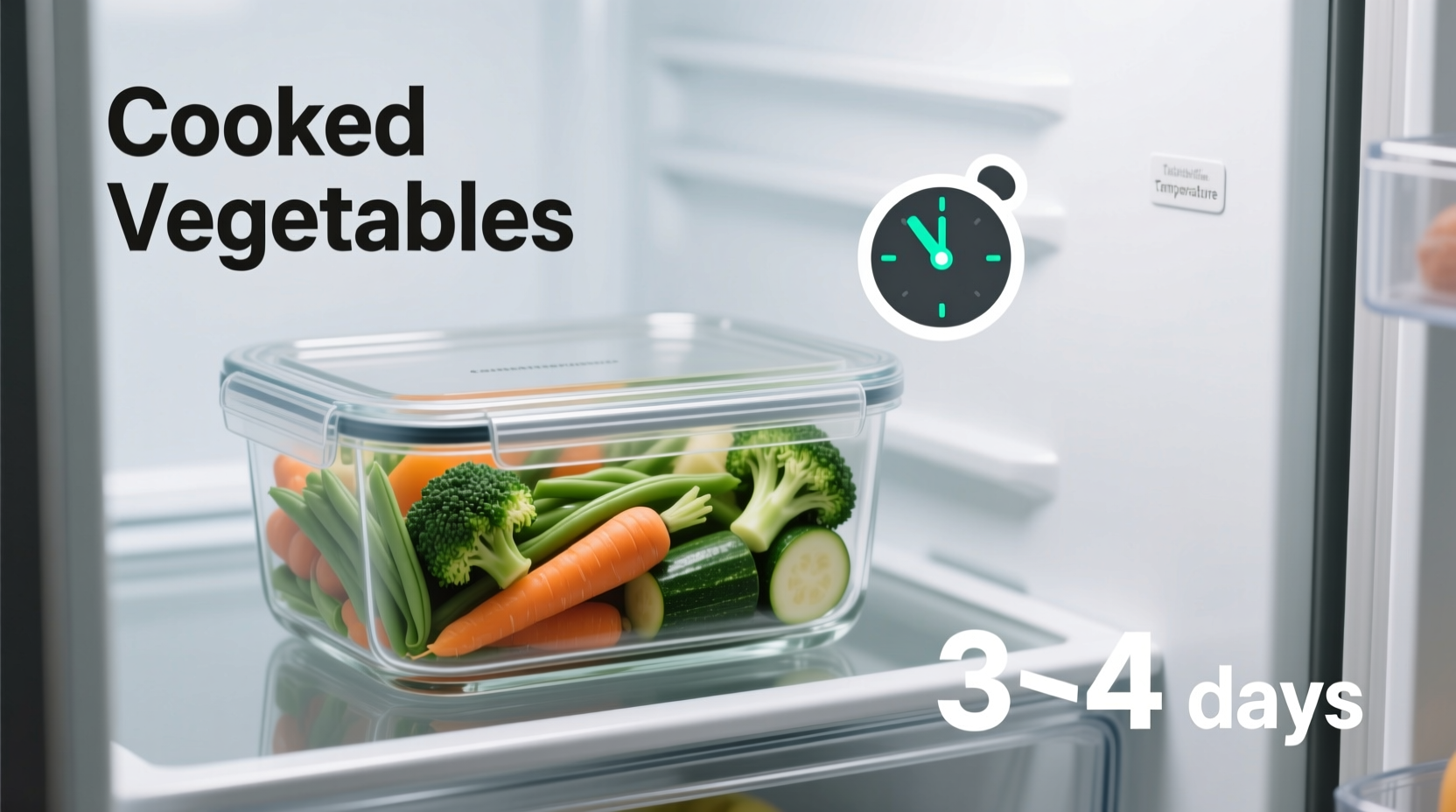Most cooked vegetables stay fresh and safe to eat in the refrigerator for 3 to 4 days when stored properly in airtight containers at or below 40°F (4°C). Root vegetables like potatoes and carrots may last up to 5 days, while leafy greens and mushrooms typically remain fresh for just 2-3 days after cooking.
Why Proper Storage of Cooked Vegetables Matters
Understanding how long cooked vegetables last in the fridge isn't just about convenience—it's crucial for food safety and reducing waste. According to the USDA Food Safety and Inspection Service, improper food storage causes millions of cases of foodborne illness annually. When you meal prep or have leftovers, knowing exact shelf life helps you avoid food poisoning while making the most of your groceries.
Food waste represents a significant environmental and economic issue. The FDA reports that approximately 30-40% of the U.S. food supply gets wasted, with vegetables among the most commonly discarded items. Proper storage knowledge puts you in control of your food's journey from refrigerator to plate.
Cooked Vegetable Shelf Life: What You Need to Know
The "3-4 day rule" applies to most cooked vegetables, but several factors influence this timeframe. Temperature consistency, storage method, and the vegetable's natural composition all play critical roles in determining freshness duration.
| Cooked Vegetable Type | Refrigerator Shelf Life | Special Considerations |
|---|---|---|
| Broccoli, Cauliflower, Asparagus | 3-4 days | Store in container with paper towel to absorb excess moisture |
| Carrots, Beets, Potatoes | 4-5 days | Root vegetables generally last longer than leafy varieties |
| Spinach, Kale, Swiss Chard | 2-3 days | Leafy greens spoil faster due to higher moisture content |
| Mushrooms | 3 days | Store in paper bag, not plastic, to prevent sliminess |
| Corn, Peas, Green Beans | 3-4 days | Blanching before cooking extends freshness slightly |
This shelf life comparison comes from research conducted by the National Center for Home Food Preservation, which has established evidence-based guidelines for safe food storage. Their studies account for both microbial growth rates and quality degradation in various vegetable types.
Maximizing Freshness: Storage Techniques That Work
How you store cooked vegetables significantly impacts their longevity. Follow these evidence-based methods to get the most from your leftovers:
Container Selection Matters
Airtight containers prevent moisture loss and contamination. Glass containers with locking lids maintain temperature stability better than plastic. Leave about half an inch of space at the top to allow for air circulation. For leafy greens, line containers with paper towels to absorb excess moisture that accelerates spoilage.
Temperature Control Is Critical
Your refrigerator should maintain a consistent temperature of 40°F (4°C) or below. Use an independent thermometer to verify actual temperature, as built-in displays can be inaccurate. Store cooked vegetables on middle shelves where temperature fluctuates less than in the door compartments. The USDA Food Safety and Inspection Service emphasizes that every hour above 40°F doubles bacterial growth rates.
Cooling Before Storage
Never place hot food directly in the refrigerator. Allow cooked vegetables to cool to room temperature within two hours of cooking (one hour if kitchen temperature exceeds 90°F/32°C). Divide large quantities into smaller containers to speed cooling and prevent raising the refrigerator's internal temperature.
Recognizing When Cooked Vegetables Have Spoiled
Before consuming leftovers, perform these safety checks:
- Visual inspection: Look for mold growth, unusual discoloration, or slimy textures
- Smell test: Trust your nose—sour, rotten, or "off" odors indicate spoilage
- Texture check: Vegetables should maintain their cooked texture—not become mushy or slimy
- Time verification: When in doubt about storage duration, follow the "when uncertain, throw it out" principle
According to food safety research from Cornell University's Food Safety Lab, certain bacteria that cause foodborne illness don't produce noticeable odors or visual changes. This makes strict adherence to recommended storage times essential for safety.

Extending Shelf Life: Freezing Cooked Vegetables
When you can't finish vegetables within 3-4 days, freezing preserves them for longer storage:
- Spread cooked vegetables in a single layer on a baking sheet and freeze for 1-2 hours before transferring to freezer bags (prevents clumping)
- Remove as much air as possible from freezer bags to prevent freezer burn
- Label with contents and date—frozen cooked vegetables maintain best quality for 8-12 months
- Thaw in the refrigerator overnight before reheating
The National Center for Home Food Preservation confirms that properly frozen cooked vegetables retain nutritional value and texture significantly better than those stored only in the refrigerator beyond recommended timeframes.
Safe Reheating Practices for Leftover Vegetables
Proper reheating eliminates potential bacteria that may have developed during storage:
- Reheat to an internal temperature of 165°F (74°C) as measured by a food thermometer
- Add a splash of water when reheating to restore moisture lost during storage
- Stir frequently for even heating, especially when using microwave
- Consume reheated vegetables immediately—don't return to refrigerator
Food safety experts at the FDA emphasize that reheating doesn't make spoiled food safe to eat. If vegetables show any signs of spoilage, discard them completely regardless of storage time.
Food Safety Timeline: From Cooking to Consumption
Understanding the complete timeline helps prevent foodborne illness:
- 0-2 hours after cooking: Safe to leave at room temperature
- 2-4 hours after cooking: Enter danger zone—bacteria multiply rapidly
- 4+ hours after cooking: High risk of bacterial contamination
- Day 1-2 in refrigerator: Peak freshness and safety
- Day 3-4 in refrigerator: Final safe consumption window for most vegetables
- Day 5+ in refrigerator: High spoilage risk—discard immediately
This timeline comes from the FDA Food Code, which establishes science-based standards for food handling in both commercial and home settings. Adhering to these timeframes significantly reduces your risk of foodborne illness.
Practical Tips for Meal Preppers and Busy Cooks
If you regularly cook vegetables in bulk, implement these strategies:
- Store vegetables in portion-sized containers for easy meal assembly
- Place newer batches behind older ones (first in, first out system)
- Mark containers with cooking dates using masking tape
- Consider vacuum sealing for maximum freshness extension
- Keep a dedicated "use first" section in your refrigerator for nearing-expiry items
University of California's Division of Agriculture and Natural Resources confirms that these organizational methods reduce household food waste by up to 25% while maintaining food safety standards.











 浙公网安备
33010002000092号
浙公网安备
33010002000092号 浙B2-20120091-4
浙B2-20120091-4